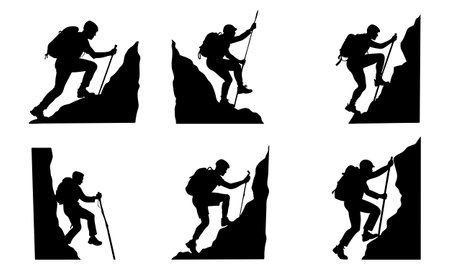Identifying British Snakes and Wildlife
Every seasoned hiker in the UK knows that venturing into the wild means sharing the trail with a host of native creatures. Before you lace up your boots and charge headlong into the undergrowth, its crucial to get wise about who you might bump into. Chief among the cast are three intriguing reptiles: the adder, grass snake, and the almost mythical slow worm. The adder – Britain’s only venomous snake – is instantly recognisable by its distinct zigzag pattern along its back. It thrives in heathlands, woodland edges, and even coastal dunes, often basking in quiet sunlit spots. Grass snakes, on the other hand, prefer wetter habitats like riverbanks or ponds and are marked by their olive-green skin and characteristic yellow collar behind the head. While non-venomous, they can deliver quite a fright with their impressive size and surprising speed. Then there’s the slow worm – not a snake at all but a legless lizard – which you’ll spot glinting bronze beneath logs or stones after a rain shower. Spotting these creatures demands vigilance: move slowly, scan your path ahead, and be especially alert near long grass or undergrowth where these animals shelter. Remember, understanding what slithers or scurries around you isn’t just about safety; it’s also part of embracing Britain’s wilder side, making every hike an adventure worth retelling.
2. Assessing the Situation: Staying Calm in Unexpected Encounters
There’s nothing quite like the rush of stumbling upon a wild adder or locking eyes with a badger during your ramble through the British countryside. In these moments, adrenaline can surge and your instincts might scream at you to bolt or freeze. However, it’s crucial to control your response for both your safety and the well-being of the wildlife.
How to Control Adrenaline and Maintain Composure
When faced with an unexpected wildlife encounter, especially with creatures like adders (the UK’s only native venomous snake), your body’s fight-or-flight response kicks in. To handle this like a true adventurer:
| Step | What to Do | Why It Matters |
|---|---|---|
| Breathe Deeply | Inhale slowly through your nose, exhale through your mouth. | Lowers heart rate, keeps panic at bay. |
| Stand Still | Stop moving and assess before acting. | Reduces chance of startling animals or stepping into danger. |
| Observe Quietly | Keep noise minimal; avoid sudden gestures. | Prevents escalation; allows time to think clearly. |
| Mentally Rehearse Exit Plan | Visualise slow withdrawal if needed. | Makes action smoother under pressure. |
The Balance: Safety Versus the Thrill of Adventure
The excitement of encountering wildlife is part and parcel of hiking across Britain’s moors, forests, and hills. But there’s a fine line between thrill-seeking and recklessness. Always prioritise personal safety—your own and that of others in your group—over a story-worthy moment. Ask yourself:
- Is this animal displaying defensive behaviour?
- Are you too close for comfort?
- Do you have an escape route planned?
- Will taking a photo put you at risk?
If In Doubt, Step Back
No Instagram snap or bragging rights are worth provoking British wildlife—or risking a bite from an adder. Stepping away calmly demonstrates respect for nature and ensures many more adventures ahead.

3. Immediate First Aid for Snake Bites and Stings
Adder Bites: Step-by-Step Response
Step 1: Stay Calm and Still
The UKs only native venomous snake is the adder, and while its bite is rarely fatal, it demands respect. If bitten, encourage the casualty to sit or lie down calmly. Movement increases venom spread, so keep activity to a bare minimum.
Step 2: Call 999 Immediately
Dial 999 and request an ambulance. Clearly state that its a suspected adder bite and provide your precise location (using What3Words if in remote countryside). Emergency services are well-versed in British wildlife incidents and will prioritise you accordingly.
Step 3: Immobilise the Affected Limb
Remove rings, watches, or tight clothing from the affected area as swelling may occur. Gently immobilise the limb using a splint or by supporting it with a sling—keep it below heart level if possible. Do not attempt to suck out the venom, cut the wound, or apply a tourniquet; these methods can do more harm than good.
Step 4: Monitor Vital Signs
Keep an eye on breathing, pulse, and consciousness. Be ready to perform CPR if necessary. Reassure the casualty and cover them with a jacket or blanket to prevent chilling while awaiting help.
Bee and Wasp Stings: What To Do
Step 1: Remove the Sting
If stung by a bee (which leaves its sting behind), gently scrape it off sideways using a fingernail or credit card—avoid using tweezers as this can squeeze more venom into the wound. Wasps don’t leave their stinger, but both cause pain and swelling.
Step 2: Cleanse and Cool
Clean the affected area with soap and water from your hiking kit. Apply a cold pack or clean cloth soaked in cold water to reduce swelling and discomfort for at least ten minutes.
Step 3: Watch for Allergic Reaction
Most stings result in minor irritation, but watch closely for signs of anaphylaxis—swelling of lips/face/throat, difficulty breathing, rapid heartbeat, dizziness or collapse. If these symptoms appear, call 999 immediately and use an adrenaline auto-injector if available.
When to Summon Emergency Services
Always call for help if:
- An adder bite occurs—never take chances with snake venom.
- The casualty experiences severe allergic reactions after any wildlife encounter.
- You’re in doubt about the severity of symptoms or are far from civilisation.
Your priority is to remain composed and methodical; British wilderness may be less hazardous than Australia’s outback, but knowing what to do when nature bites back is the mark of a true adventurer.
4. Navigating the NHS: Seeking Medical Help in the Wilderness
When adrenaline is pumping and danger lurks on the trail, knowing how to contact the NHS and coordinate a rescue can make all the difference. Out in the wilds of the Peak District or amidst the rugged Scottish Highlands, your mobile might be your only lifeline. Here’s how to stay sharp, act fast, and keep British-level cool during an emergency.
Contacting the NHS from Remote Locations
If you’re bitten by a snake or injured by wildlife, your first move is to assess signal strength. Move to higher ground if possible. Dial 999 for immediate emergencies, and ask for “ambulance” when prompted. If voice calls fail, try sending a text to 999—but you must register this service beforehand. The key is clarity: give precise details about your location using OS grid references or ‘what3words’ if available.
Essential Information to Provide
| Detail Required | How to Communicate It |
|---|---|
| Location | Use landmarks, OS grid reference, or ‘what3words’ app |
| Nature of Injury | Describe symptoms (e.g., snake bite site, swelling) |
| Your Condition | Mention allergies, medications, or pre-existing conditions |
| Number of People Involved | State if others are injured or require assistance |
Using the 999 Service Effectively
The 999 operator will guide you step-by-step—follow instructions precisely. If you’re advised to remain still (as with adder bites), do not attempt self-rescue unless instructed. Keep your phone battery conserved; avoid unnecessary calls and texts. Consider switching off background apps that drain power.
Coordinating a Rescue While Staying Safe
- Assign roles: One person contacts emergency services while another monitors the casualty.
- If moving is necessary, leave clear markers (bright clothing or stacked stones) along your route for rescuers.
- Stay put unless directed otherwise; movement can worsen injuries, especially after a venomous bite.
British Trail Safety Protocols
While waiting for help, shelter from extreme weather but avoid hiding from view—visibility aids rescue teams. In classic British fashion, keep spirits up and morale steady: a calm group is easier to manage in crisis. Remember: proper preparation—including a charged phone and knowledge of local emergency procedures—could turn a perilous encounter into just another wild tale for your next pub night.
5. Gear and Kit: British Essentials for Wildlife Emergencies
When you’re braving the wilds of the British Isles, your kit is your lifeline. Forget what you’ve seen on telly about venomous serpents lurking behind every bush—here in the UK, snake encounters are rare, but being ready for anything is all part of the adventure. First off, let’s talk snake bite kits. While they’re marketed as a must-have for global trekking, in Britain, our only native venomous snake is the adder, and bites are extremely uncommon. NHS advice says: skip the fancy kits—just carry a mobile to call 999 and focus on keeping calm and immobile if bitten.
Map Mastery: Ordnance Survey and Navigation
No true British hiker would set foot on a remote trail without a trusty Ordnance Survey map (and yes, learn to read it properly—the weather can turn quicker than you can say “blimey!”). Pair it with a solid compass; GPS devices are handy, but nothing beats classic navigation when batteries die or signal drops in the fells.
Personal Locator Beacons (PLBs): Tech Meets Tradition
If you’re pushing into the wilder corners—think Scottish Highlands or the Lake District’s back-of-beyond—a Personal Locator Beacon (PLB) could be your lifeline. These devices send a distress signal via satellite so rescuers know exactly where to find you if things go pear-shaped. In short: don’t leave home without one if you’re heading off-grid.
First Aid Kit: The Realistic Approach
A tailored first aid kit for UK hiking means plasters, antiseptic wipes, a couple of sterile dressings, antihistamines for bites or stings, and perhaps an emergency foil blanket for warmth. Add blister plasters and paracetamol—pain from wildlife encounters often comes from twisted ankles rather than fangs! Most importantly, pack your common sense and don’t rely solely on gadgets.
By preparing with these British-specific essentials, you’ll be ready to tackle whatever Mother Nature throws at you—from curious adders to unpredictable weather—with confidence and true adventurer’s grit.
6. Adventurous Tales: Lessons Learned From the Trail
The untamed British countryside has a knack for testing even the most seasoned hikers, and nothing sharpens your instincts like a brush with wildlife. Let’s dive into several pulse-raising anecdotes that capture both the thrill and the vital lessons every rambler should remember.
Face to Face with an Adder: Quick-Thinking on Dartmoor
Last summer, Tom, an avid solo hiker, found himself nearly stepping on a coiled adder while navigating Dartmoor’s rugged terrain. Instead of panicking, he froze in place—just as his training dictated. By slowly backing away and alerting his mates with a calm signal, Tom avoided startling the snake and kept everyone safe. The lesson? Respect local fauna’s space and always scan the path ahead, especially in sun-warmed clearings where adders bask.
A Stag Encounter in the Scottish Highlands
Sophie and her walking group were crossing a misty glen when a towering red deer stag appeared out of nowhere. Startled but steady, they stopped, lowered their voices, and waited as the majestic creature passed just metres away. Their composed reaction prevented any escalation—a reminder that wildlife often wants peace as much as you do. The takeaway: Stay calm, give animals room, and never attempt to approach or feed them.
Foxes After Midnight: Urban Wilds on the South Downs Way
On a moonlit bivvy night outside Brighton, Mark heard rustling near his kit bag. A curious urban fox was investigating his snacks. Rather than shoo it aggressively, Mark clapped loudly from a distance and secured all food in scent-proof bags. This quick action protected both his supplies and the fox from developing bad habits around humans. Lesson learned: Properly store food and rubbish even if you’re close to civilisation—wildlife is everywhere!
Resilience Forged by Experience
Each close call left these hikers more aware of their environment—and more respectful of nature’s boundaries. They now double-check first aid kits for snakebite bandages, keep emergency contacts handy, and always inform someone about their route before setting off.
The Ultimate Takeaway: Preparedness Meets Respect
British trails can be wild places where adrenaline meets awe. These stories prove that preparedness isn’t just about carrying kit; it’s about cultivating respect for every creature you encounter. So, next time you set out across heather-clad hills or ancient woodlands, remember: adventure favours those who honour both resilience and the untamed spirit of Britain’s great outdoors.


